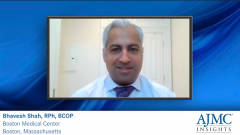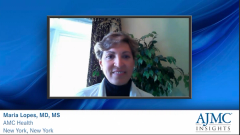
CVD in Prostate Cancer: Risk-Bearing Practices and Alternative Payment Models
Continuing their discussion on cost of care in prostate cancer, experts reflect on how cardiovascular disease impacts risk-bearing practices and alternative payment models.
Episodes in this series

Transcript:
Bhavesh Shah, RPh, BCOP: There’s definitely an impact on alternative payment models when you have patients with prostate cancer or any malignancy. Thinking about the cardiovascular implications we have, especially because we just talked about patients [who are] African American. No matter if they have low risk or intermediate risk, they probably have a much higher risk of mortality and cardiovascular events from the prostate cancer therapies that we have, specifically ADT [androgen deprivation therapy]. As a payer, we were more looking at the total cost of care. If you’re in a risk-based agreement or you own and operate a payer, you’re aware of these things if you’re in this type of model or in the risk-based agreement. There are full-risk models, and there are dual-risk models. There’s definitely a lot more awareness around the alternative payment models that drive some of the outcomes, which impact the total cost of care. As a payer and a provider, I think there’s more that we need to see around the total cost of care from these complications and comorbidities that we’ve seen historically for decades.
How have we changed our practice by having better drugs, better screening, better treatment, better awareness to manage total cost of care? If we’re able to show that, [then you have] these alternative payment models, which aren’t focused on cardiovascular events related to prostate cancer but can be. You have a direct link that shows that if you have prostate cancer, if you’re Black, and if you have ADT, your risk of developing mortality is X, Y, Z, and it’s going to increase the total cost of care for a payer. What’s the most optimal therapy that this patient should be on? Is it going to be a drug that reduces cardiovascular risk for that patient? [We need to] change the treatment landscape if we’re able to connect the dots from more evidence.
Maria Lopes, MD, MS: It’s about understanding and looking at patient whole health, understanding the implication for total cost of care, and understanding from an oncologist standpoint, which tends to focus on oncology. In the context of age and comorbid conditions, treatment selection may matter in terms of implications for total costs of care. It raises the need to a higher level, both in terms of analytics, as well as care coordination and integration of care among treatment providers.
At a time when we’re under accountable care [organizations], we’re trying to manage risk and total costs, regardless of comorbidities and across different silos. It certainly highlights an amazing opportunity where you look at compounding that risk. It doesn’t take years to see what kind of an impact ADT can have on increasing cardiovascular-risk reduction and what can be done to mitigate that risk. Multiple provider groups can hopefully work together around shared decision-making and around making the appropriate treatment selections that can impact total cost of care.
Transcript edited for clarity.
Newsletter
Stay ahead of policy, cost, and value—subscribe to AJMC for expert insights at the intersection of clinical care and health economics.

















































